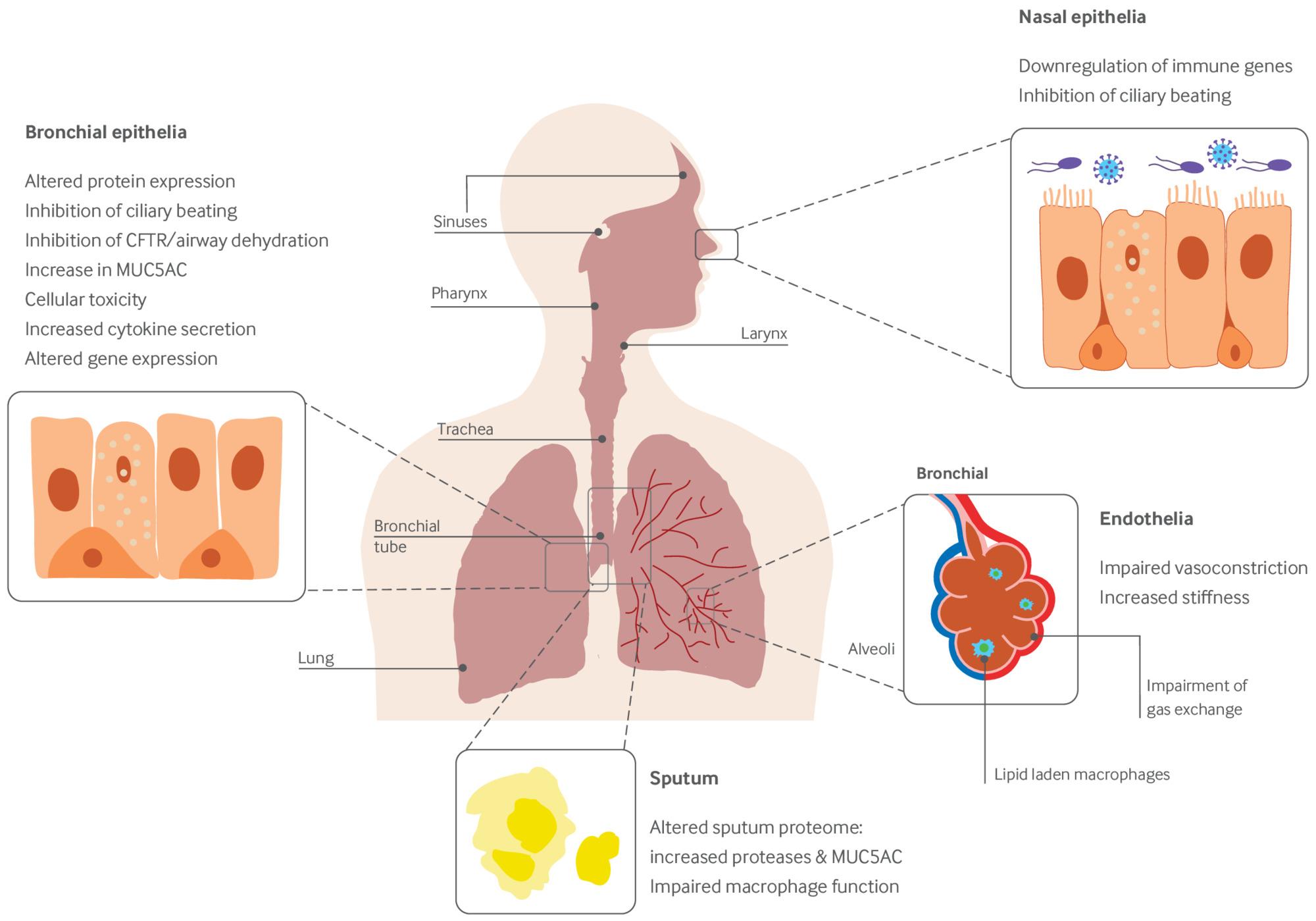Electronic cigarettes, commonly known as e-cigarettes or vapes, can adversely affect your lungs. The aerosol inhaled from these devices is not merely water vapor; it contains a variety of potentially harmful chemicals.
Mechanisms of Lung Impact
Exposure to e-cigarette aerosol can lead to several detrimental effects on the respiratory system:

- Airway Inflammation and Irritation: Chemicals within the aerosol, including flavorings and propylene glycol/vegetable glycerin, can cause irritation and inflammation in the airways and lung tissue.
- Cellular Damage: Studies have indicated that components in e-cigarette vapor can damage lung cells, including epithelial cells that line the airways and critical immune cells, thereby impairing their normal function and defense mechanisms.
- Impaired Lung Function: Acute use of e-cigarettes has been shown in some research to cause immediate changes in lung function, such as increased airway resistance and oxidative stress.
- Increased Susceptibility to Infections: Vaping may compromise the lungs’ ability to clear pathogens, potentially increasing the risk and severity of respiratory infections like bronchitis and pneumonia.
- Exacerbation of Chronic Lung Conditions: For individuals with pre-existing respiratory diseases such as asthma or Chronic Obstructive Pulmonary Disease (COPD), e-cigarette use can trigger or worsen symptoms.
Key Harmful Substances in E-cigarette Aerosol
The aerosol generated by heating e-liquids contains numerous substances with known risks to lung health:
- Nicotine: Beyond its highly addictive nature, nicotine itself can be toxic to developing lungs and may contribute to lung tissue damage.
- Ultrafine Particles: These very small particles can be inhaled deeply into the lung tissue, potentially causing inflammation and contributing to respiratory issues.
- Flavoring Chemicals: Many e-liquids contain diverse flavoring agents. Some, like diacetyl, have been linked to serious lung disease (bronchiolitis obliterans). The long-term safety of inhaling many other flavorings is also not well established.
- Volatile Organic Compounds (VOCs): Certain VOCs, such as benzene (a known carcinogen), acrolein (a potent irritant), and formaldehyde, can be present in e-cigarette aerosol and are harmful to the lungs.
- Heavy Metals: Trace amounts of heavy metals, including nickel, tin, and lead, can leach from the heating coil or other components into the aerosol and subsequently be inhaled.
Long-Term Pulmonary Consequences
While e-cigarettes are a relatively recent product compared to traditional tobacco, emerging evidence suggests potential for significant long-term lung damage. Chronic exposure to the constituents of e-cigarette aerosol is associated with an increased risk of developing chronic lung diseases. The full spectrum of long-term effects is still under active investigation, but current scientific understanding indicates that e-cigarettes are not harmless and pose tangible risks to lung health, particularly for non-smokers, youth, and young adults.










